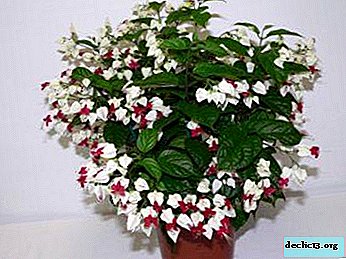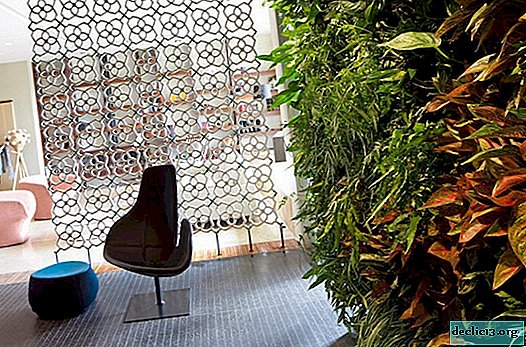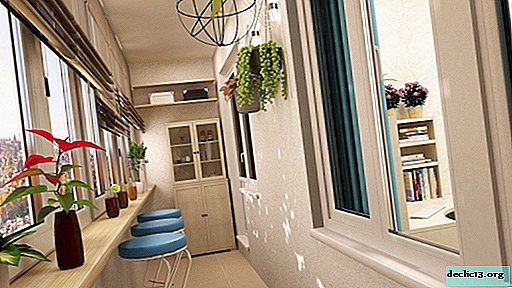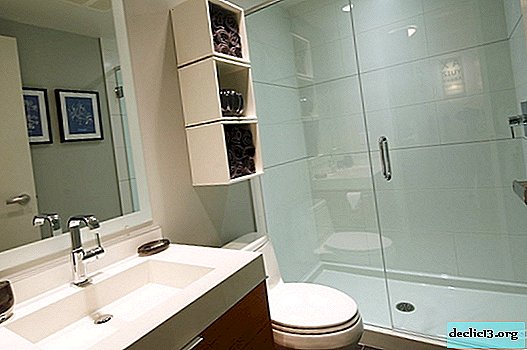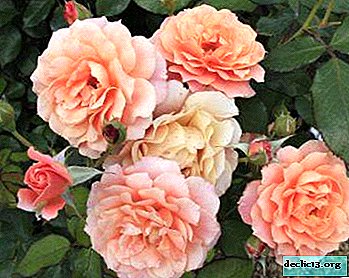Hybrid variety of Anthurium Princess Amalia Elegance: description with photo, cultivation and home care
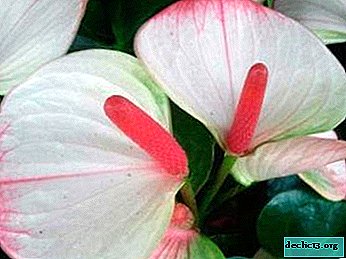
Anthurium Princess Amalia Elegance - a spectacular indoor flower. In comfortable conditions it grows into a large bright bush with exquisite delicate flowers.
How to create him these conditions will be described in this article. You will learn how to water this plant, what soil it needs and other nuances of care.
In addition, information about the origin of this flower and its appearance is disclosed here. Photos of this variety will also be given so that you can appreciate the beauty of the plant.
Other names and botanical characteristic
Anthurium Princess Amalia Elegance (Anthurium Princess Amalia Elegance) is a hybrid variety of the genus Anthurium of the Aroid family (Araceae).
A perennial ornamental plant is classified as a medium-sized species of hatched specimens (what are the types and varieties of anthurium?).
In translation, the name means "flower" and "tail" due to the structure of the flower itself - a spacious coverlet is decorated with a bright ear - an inflorescence similar in shape to a small tail. The people call the exotic plant "male happiness", "flower of love," "flamingo flower."
History of occurrence and geography of habitat
Natural varieties grow in humid tropical woodlands of South and Central America, on the islands of the Caribbean archipelago.
The first copies of Anthurium were brought to Europe by the French botanist E. Andre in the 19th century. At the beginning of the 20th century flowers were grown in England at the Kew Royal Botanic Gardens. Hybrid varieties are widespread throughout the world.. In 1983, a Croatian scientist classified all types of anthurium, dividing them into 19 separate sections.
Description of appearance
The height of an adult bush is up to 50 - 60 cm in height.
The leaves are large, slightly elongated, leathery in structure, heart-shaped.
Flowers - Modified Bract Leaves. In the middle of the bract - the bedspread is an inflorescence. The cob is straight, large, can be saturated pink, purple and pale purple.
The bedspread is white-pink with pale green spots. There are sub-grades with a pink coverlet bordered by a dark pink narrow stripe. The mixture of color shades is harmonious, has a smooth transition of pink and green tones.
Important: With proper care, it can bloom all year round, produces at the same time up to 6 strong peduncles.Photo
Here you can see a photo of the hybrid Princess Amalia Elegans:




How to care at home?
Temperature
The heat-loving flower in spring and summer feels good at a temperature of 22 - 26 ° C.
In autumn, the air temperature must be reduced to 18 ° C.
Important: the flower does not tolerate sharp daily temperature changes, drafts and cold air flows from the air conditioner or fan should also be avoided.Watering
In summer, water should be 2 - 3 p. per week in small portions.
In the heat, to increase the air humidity to 85 - 90%, you need to add daily spraying of the bush (water should not fall on the flowers themselves). Special humidifiers are installed next to the pots; you can arrange open containers with water.
After watering, the pan should be drained. In autumn, with decreasing temperature, watering should be reduced.
Watering needs to be done with clean, settled water at room temperature.
Shine
South location only possible with darkened windows, direct sunlight leaves burns on the leaves.
It is better to place pots on the east and west sides of the house.
Priming
 Florists recommend using ready-made soil mixtures for planting, begonias, or orchids when planting (slightly acidic soil for orchids with peat "Auriki Gardens", flower soil "Terra Vita", etc.).
Florists recommend using ready-made soil mixtures for planting, begonias, or orchids when planting (slightly acidic soil for orchids with peat "Auriki Gardens", flower soil "Terra Vita", etc.).
Drainage layer requiredconsisting of crumb bricks, expanded clay.
The composition of the soil mix for Anthurium Princess Amalia elegans:
- peat -1 h.;
- sheet land - 1 hour;
- humus - 1 hour;
- sand - 1 hour;
- pieces of pine bark - 1 hour;
- moss-sphagnum - 1 hour;
- drainage.
To disinfect the soil, it is recommended to add crushed charcoal to the mixture.
Pruning
The bush is cut during transplantation, in early spring.
Cropping Pattern:
- Lower dry leaves are pruned.
- Withered peduncles and buds after flowering must be removed.
- When transplanted, infected and dry root processes are cut out.
- The lateral stems are separated along with the root processes.
Top dressing
Variety Princess Amalia elegans well perceives complex mineral fertilizers for flowering plants.
It can be alternated with organic top dressing (weakly concentrated mullein solution, in the ratio of 200 g of rotted mullein to 5 l of water).
To form buds and support the plant during flowering, Pokon liquid top dressing for flowering plants can be used. The composition of the drug includes trace elements of nitrogen, phosphorus, potassium in the required ratio.
In spring and summer, fertilize should be 1 time in 7-10 days. In autumn, the feeding regimen is reduced by 2 times.
Pot
Pots can be used from any material, the main condition is that the size of the pot should correspond to the volume of the root. In a too large pot, the plant grows roots and leaves, flowering stops. It is better to use wide and not very deep containers, the size of the root processes.
When transplanting, the diameter of the pot should be increased by 1.5-2 cm. It is imperative to make drainage holes at the bottom of the pot to drain water during irrigation.Transfer
Young bushes grow more intensively, they need replanting every spring for the first 4 - 5 years. Adult plants are transplanted less often, 1 time in 3 yearswhen the roots make their way into the drainage holes, the pot becomes small.
 Immediately after purchase, the seedling is transplanted into a permanent pot after 2 to 3 weeks of the adaptation period.
Immediately after purchase, the seedling is transplanted into a permanent pot after 2 to 3 weeks of the adaptation period.
Transplant Procedure:
- The pot with the mother plant flips to its side.
- Clutching all the stems with your palm, the entire bush is carefully removed.
- The old substrate is removed, the roots can be washed in the shower.
- The root is examined, dry and decayed root processes are cut off.
- Slices are powdered with powdered activated charcoal or charcoal.
- The bush is installed in a new container with a drainage layer of 4 - 5 cm.
- The voids are filled with new soil mixture.
- The soil is slightly compacted.
- The surface is mulched from above with moist moss to prevent the roots from drying out.
- The bush is sprayed with a solution of epin.
- Light scattered, watering ordinary.
- Top dressing resumes after 2-3 weeks.
- Spraying is regular.
Wintering
The optimum temperature for the plant is 15 - 17 ° C.
In winter, it is enough to moisten the soil once every 7 to 10 days.
The soil should be slightly moist.but not raw.
On cloudy days, use artificial lighting for 2 to 3 hours a day.
In the cold season, you can nourish the roots with the universal fertilizer "Pokon" once every 2 to 3 weeks.
Important: dosage of dressings is strictly observed in accordance with the instructions.To stimulate flowering, it is necessary to gradually increase the air temperature from December, in January, the temperature of the plant content - up to 20 ° C. At the end of March, you should water the flower with hot water, up to 40 - 50 °.
Propagation Features
Dividing the bush
 The most affordable way for home gardening. When transplanting, the mother bush is divided into several parts.
The most affordable way for home gardening. When transplanting, the mother bush is divided into several parts.
In each small bush, adult shoots and part of a healthy root should be preserved.
Separated parts are transplanted into small containers. Watering is moderate. The soil before planting should be disinfected with special preparations; it can be steamed in a water bath. This is necessary to reduce the risk of developing the disease and prevent the infection of anthurium with pests.
Side shoots
If the bush has grown too much, a lot of lateral processes have appeared, they are also neatly separated from the mother bush along with the root processes.
Cuttings
Apical cuttings are cut in April - March. On each handle should be 2 to 3 nodules. A greenhouse is required for rooting. After 1 - 1.5 months, rooted shoots are planted in separate containers.
It is enough to moisten the soil, regularly ventilate the seedlings, removing the shelter for 20 - 30 minutes a day.
Seeds
A laborious and lengthy process. Seeds quickly lose their germination, do not retain varietal characteristics. Seeds germinate in a special moistened substrate, sowing is covered with a film. Seedlings dive into separate cups when 2 to 3 leaves appear.
Briefly about diseases and pests
- Mold of leaves and decay of the stem, roots causes waterlogging of the soil and cold. Transplantation, pruning, soil replacement is required.
- Smallpox - the result of increased humidity and musty air. Damaged leaves are cut off. The bush is treated with actellik, phytosporin.
- Thrips - carriers of infections. You should spray the bush with neoron. Shriveled leaves are clipped.
- Leaf treatment will save spider mites soap solution. After processing, the leaves should be wiped with mineral oil.
Similar flowers
- Amazonian alocasia. The leaves are elongated, the ear is pink, the cover is gently green with a white pattern.
- Syngonium pink. Decorative grade. The leaves are heart-shaped, distinguished by a soft pink color of the leaves. The sheet plate has a pale green border.
- Syngonium Pixie grows in a compact bush. Leaves are glossy, elongated. Heart-shaped.
- Spathiphyllum Chopin - indoor plant. The leaves are saturated green, shiny, dense. The bedspread is white, with a greenish tint.
- White-spotted zantodexia differs in a soft pink color of a narrow bedspread. Leaves are green.
Anthurium princess Amalia elegans is not a demanding and not capricious hybrid variety. With competent and attentive care, he quickly adapts to home conditions.







